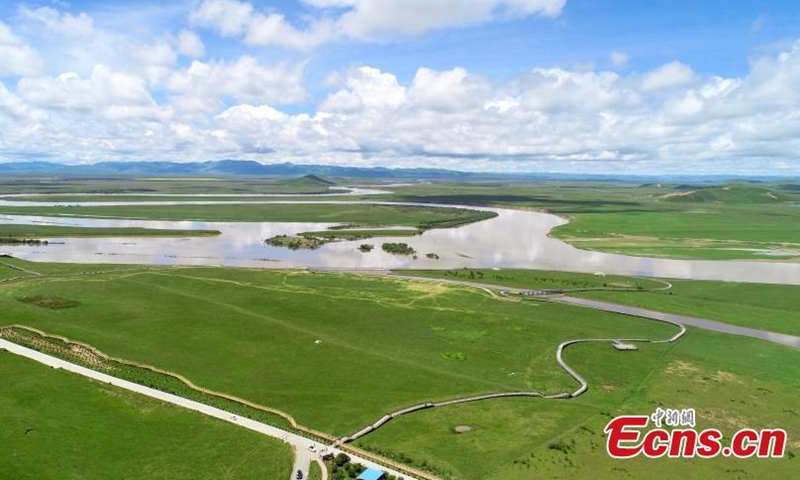
The Yellow River, called the Mother River of China, originates from the Bayankala Mountains in Qinghai Province and flows from west to east. The first bend of Yellow River is located at Tangke town in northwestern plateau of Southwest China's Sichuan province. After plunging through the Bayankela Valley, the yellow river slows down and takes a huge turn between Mount Animaze and Mount Xize. The turn is 443 kilometers long. It is the first bend of the yellow river from its origin. (Photo: China News Service/ An Yuan)
In the last two years, China has cleaned nearly 90 million tons of solid waste from the Yellow River, China's Mother River which traverses nine provincial regions, environmental authorities said on Thursday.
From 2021 to 2022, a comprehensive investigation and remediation of solid waste dumping within a 10-kilometer range on both sides of the main stream of the Yellow River, as well as its four main tributaries were carried out, with a total of nearly 90 million tons of various types of solid waste being cleared, effectively safeguarding the water ecology of the Yellow River Basin, Zhao Qunying, director at the Bureau of Ecological and Environmental Enforcement under the Ministry of Environment and Ecology (MEE), said at a monthly press conference of the MEE on Thursday.
The investigation covered 55 cities and prefectures across nine provinces in the Yellow River Basin, with a total area of approximately 133,000 square kilometers, according to Zhao.
He also noted that the second phase in tackling solid waste in the Yellow River has been launched, and will also last for two years, during which the environmental authorities will focus on key issues and inspect 50 national-level natural reserves.
Satellite remote sensing and public reporting will both contribute to the discovery of environmental issues along the Yellow River. "We will mobilize relevant experts to offer recommendations for local solid waste cleanup and remediation efforts, providing focused support and guidance," Zhao said.
Meanwhile, China will also enhance the ecological protection in the Yangtze River, China's longest river.
The MEE has published a detailed assessment regulation for the aquatic ecosystem of the Yangtze River Basin. The pilot assessment of the aquatic ecosystem in the Yangtze River Basin has been initiated, Liu Youbin, the spokesperson of the MEE said at the Thursday conference.
A total of 50 assessment water bodies have been identified in the main stream of the Yangtze River, major tributaries, and key reservoirs. The monitoring and evaluation of the aquatic ecosystem are being carried out through zonal and categorical approaches, the Global Times learned.
Xu Chong, an expert from the MEE, pointed out that the assessment of the aquatic ecosystem in the Yangtze River Basin primarily focuses on positive incentives. "It aims to drive the resolution of provincial-level water ecological environmental issues and continuously improve the quality of the basin's aquatic ecosystem," he said.




